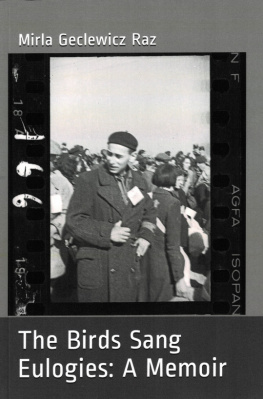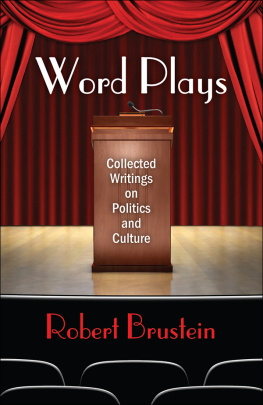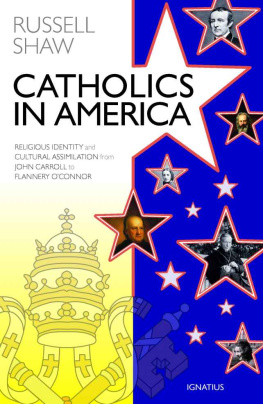
GREAT AMERICAN CATHOLIC EULOGIES
Compiled and Introduced by Carol DeChant
Foreword by Thomas Lynch
Edited by Gregory F. Augustine Pierce and L.C. Fiore
Cover Design by Tom A. Wright
Cover Photo by Cindy Farmer under license from Bigstock.com
Text Design and Typesetting by Patricia A. Lynch
Scripture quotes are from the New Revised Standard Version of the Bible, copyright 1989 by the Division of Christian Education of the National Council of the Churches of Christ in the USA. All rights reserved. Used with permission. Scripture quotes in source material have not been changed from the original.
Copyright 2011 by Carol DeChant
Foreword copyright 2011 by Thomas Lynch
Published by ACTA Publications, 4848 N. Clark Street, Chicago, IL 60640-4711, (800) 397-2282, www.actapublications.com.
For permission to reprint the eulogies that appear in this book, we are grateful for the copyright owners listed on pages 393-398, whose generosity made this book possible. The Credits and Permissions section represents an extension of the copyright page.
All reasonable efforts have been made to locate and contact sources for reprint permission. If a reader is an author or rights holder not located prior to publication, please contact ACTA Publications. No effort has been made to modernize or standardize the language and syntax of the eulogies or homilies contained herein.
All rights reserved. No part of this publication may be reproduced or transmitted in any form or by any means, electronic or mechanical, including photocopying and recording, or by any information storage and retrieval system, without permission from the publisher. Permission is hereby given to use short excerpts with proper citation in reviews, newsletters and handouts, and scholarly papers.
Library of Congress Catalog Number: 2011910088
Strangers, lovers, friends, neighbors, family,
in the body our oneness is displayed in diversity.
Every aisle a path, every step a sign
of the journey we walk together to the end of time.
Thomas J. Porter, We Remember, We Believe
We cannot know for certain how long we have here. We cannot foresee the trials or misfortunes that will test us along the way. We cannot know what Gods plan is for us.
President Barack Obamas eulogy for Senator Edward M. Kennedy, August 29, 2009, Our Lady of Perpetual Help Basilica, Roxbury, MA
There is a photo of President Barack Obama at Senator Ted Kennedys funeral. He has just done what hed come there to doa daunting undertaking, reallybecause this isnt just any Saturday funeral in August. These are not just anyones obsequies. The body in the polished mahogany box at the foot of the altar is that of the nations most accomplished eulogista task his large and tragic clan has, alas, given him too much practice at. And the new president, just seven months into office, has been called upon to eulogize him.
The senators death, after a yearlong struggle with brain cancer, was not unexpected. The speechwriters have been at work for weeks. The president has had a chance to prepare. But this is not a dress rehearsal. The Basilica of Our Lady of Perpetual Help is packed with senators, congressmen, actors, and artists; three of the four living former presidents are there; dozens of pallbearers and honorary bearers; deacons, priests, and a cardinal archbishop; Placido Domingo and Yo-Yo Ma; the great and good assembled. The cameras are rolling. Millions watch and listen around the world. Outside, the remnant of Hurricane Danny has made the East Coasts late summer seem like March in Mayo. There are wildfires in California. Wars rage in Iraq and Afghanistan. The cable news channels have been holding forth since midweek with their treacly brand of Grief T.V.the somber tones, the dark suits, the faux commiserationstaking a break from their coverage of Tea Party patriots disrupting town halls and politicos spouting death panel demagogueries. The Catholic blogs are furious with opinions on whether Kennedys corpse should be allowed inside the church at all. And because this is an Irish-American venture, Raymond Burke, the archbishop of St. Louis, is gainsaying Bostons Cardinal Sean OMalleys decision to open the church doors to the famous sinner, self-confessed. This is America, after all, and everyone has an opinion. On abortion and religion, race and class and creed and money: all Kennedys life has been spent in the thick of it. His death has changed nothing, and everything.
But for Obama on this day, his part in this theater is ancient and well-defined: to speak for the ages, to bring homage and appreciation, the final appraisal, the last word and first draft of all future biography.
He has just stepped down from the lectern in the sanctuary from which he has done just that and is met in the center aisle by the dead mans widow, who has stepped from her pew to express her gratitude. He embraces her with his right arm while, with his left, he reaches back to place a hand firmly on the pall-draped coffin. It is only a moment. He seems almost to be launching the coffin, and the dead man in it, toward an eternity the living cannot yet occupy. He holds the dead mans widow while consigning the dead man to another realm.
That is the moment the photo holds, the eulogist between the mourner and the mourned over, the grief smitten and the object of grief, upright between the heartbroken and horizontal, consoling the living whilst commending the dead. These are all essentials of the eulogists brief. And though the basilica is full of applause now, and cameras focusing and clicking away, between the widow and the eulogist and the dead man there is this elegant hush, this clarity, this certainty that he has risen to the occasion and gotten it right and taken a proper measure of the man.
What we can do is to live out our lives as best we can with purpose, and with love, and with joy. We can use each day to show those who are closest to us how much we care about them, and treat others with the kindness and respect that we wish for ourselves. We can learn from our mistakes and grow from our failures. And we can strive at all costs to make a better world, so that someday, if we are blessed with the chance to look back on our time here, we know that we spent it well; that we made a difference; that our fleeting presence had a lasting impact on the lives of others.
ibid.

Art, wrote W. H. Auden, is what we do to break bread with the dead. The art of eulogy seeks a similar communion and borrows from the art of essaying, which takes its name from the French word to measure and attempt, to assess and assayto weigh the worth and genuine content. The eulogist must measure life and times, impact and contribution, foibles and endearments, and consider both the generic and the specific, to wrest the one and only from the one of many. The best eulogies give us the close-up and the long view, the micro and macro, the species and the specimen, the general and the singular. They must fit the only man and everyman, the human and humanity and, in Kennedys case, the Catholic and the catholic. Good eulogies share in the larger purpose of all good funerals: to get the dead where they need to go, and get the living where they need to be.
Death is catholic too. Mortality is the all-embracing, one-size-fits-all of living things. But for each of us it is the most intimately personal, utterly monogrammed and tailor-made contingency: ours and ours alone. And ours is a species that deals with death by dealing with our dead. By tending to the thing itselfthe corpses, the mourners, the graves and tombs and fireswe get some glimpses into larger meanings. Our concepts of the soul and its journey, eternal rewards and punishments, our fear of ghosts and apparitions, our sense that the dead must be remembered and appeased and their remains disposed of with respect, all proceed from the shovel and shoulder work, the heavy lifting and hard-going, the vacant eyes of the lost and bereaved that a death in the family occasions. We process mortality by processing mortals, by cortege and entourage, from one station to the next in this pilgrimage of grief. The functionaries and customs, the human dramas and sacred scripts of death, down our species history, are both endlessly different and all the same. In the beginning surely it was the wordthe gift of language brought to bear against this mystery. There is no more deeply human habit than of throwing words into the gaping maw of mortality. Epitaph and elegy, obituary and lamentall efforts to assign meaning where, without words, there would be none.
Next page








